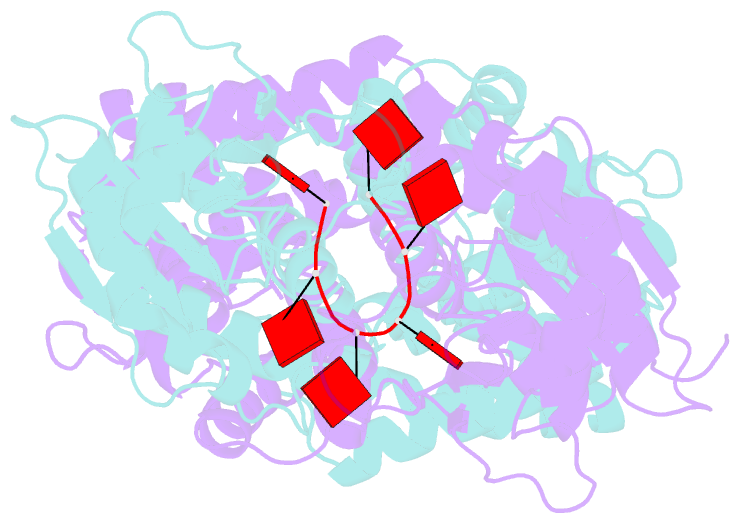Summary information and primary citation
- PDB-id
- 8pe3; SNAP-derived features in text and JSON formats;
DNAproDB
- Class
- RNA binding protein
- Method
- X-ray (1.96 Å)
- Summary
- Structure of csm6' from streptococcus thermophilus in complex with cyclic hexa-adenylate (ca6)
- Reference
- McQuarrie S, Athukoralage JS, McMahon SA, Graham S, Ackermann K, Bode BE, White MF, Gloster TM (2023): "Activation of Csm6 ribonuclease by cyclic nucleotide binding: in an emergency, twist to open." Nucleic Acids Res., 51, 10590-10605. doi: 10.1093/nar/gkad739.
- Abstract
- Type III CRISPR systems synthesize cyclic oligoadenylate (cOA) second messengers as part of a multi-faceted immune response against invading mobile genetic elements (MGEs). cOA activates non-specific CRISPR ancillary defence nucleases to create a hostile environment for MGE replication. Csm6 ribonucleases bind cOA using a CARF (CRISPR-associated Rossmann Fold) domain, resulting in activation of a fused HEPN (Higher Eukaryotes and Prokaryotes Nucleotide binding) ribonuclease domain. Csm6 enzymes are widely used in a new generation of diagnostic assays for the detection of specific nucleic acid species. However, the activation mechanism is not fully understood. Here we characterised the cyclic hexa-adenylate (cA6) activated Csm6' ribonuclease from the industrially important bacterium Streptococcus thermophilus. Crystal structures of Csm6' in the inactive and cA6 bound active states illuminate the conformational changes which trigger mRNA destruction. Upon binding of cA6, there is a close to 60° rotation between the CARF and HEPN domains, which causes the 'jaws' of the HEPN domain to open and reposition active site residues. Key to this transition is the 6H domain, a right-handed solenoid domain connecting the CARF and HEPN domains, which transmits the conformational changes for activation.





